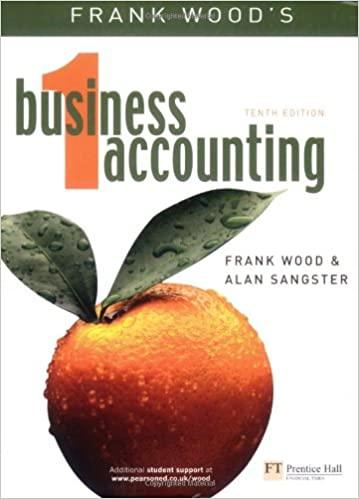BOROUGH OF MANHATTAN COMMUNITY COLLEGE PRINCIPLES OF ACCOUNTING Test # 3-Chapters ACC 122-1000 (Prof. F. Asante) Date-December 7, 2018 1. Cost of goods sold: A) Is another term for merchandise sales. B) Is the term used for the cost of buying and preparing merchandise for sale. C) Is another term for revenue. D) is also called gross margin. E) Is a term only used by service firms. 2. Merchandise inventory: A) is a long-term asset. B) Includes supplies. C) is a current asset. D) Is classified with investments on the balance sheet E) Must be sold within one month. 3. Beginning inventory plus net purchases is: 0 5l40 A) Cost of goods sold. B) Ending Inventory. C) Sales. D) Merchandise available for sale. 4. A company made net sales revenue of $540,000 and cost of goods sold totaled $324,000. Calculate its gross profit percentage. A) 40.00%. B) 66.67%. C) 100.00%. D) 300.00% A perpetual inventory system requires updating of the inventory account only at the beginning of an accounting period. 5. A) True B) False 6. Gross profit: A) Is also called gross margin. B) Less other operating expenses equals income from operations. C) Equals net sales less cost of goods sold. D) Must cover all operating expenses to yield a return for the owner of the business E) All of the above. . A company had sales of $695,000 and cost of goods sold of $278,000. Its gross margin equals: A) $(417,000). B) $695,000. C) $278,000. D) $417,000 E) $973,000. 8. A company uses the perpetual Inventory system and recorded the following entry Accounts Payable 2,500 Merchandise Inventor. Cash. 50 2,450 This entry reflects a: A) Purchase. B) Return c) Sale. D) Payment of the account payable and recognition of a cash discount taken. E) Purchase and recognition of a cash discount taken. 9. A company purchased $1,800 of merchandise on December 5. On December 7, it returned $200 worth of merchandise. On December 8, it paid the balance in full, taking a 2% discount. The amount of the cash paid on December 8 equals: A) $200. B) $1,564. C) $1,568. D) $1,600 E) $1,800. 10. A company purchased $4,000 worth of merchandise. Transportation costs were an additional $350. The company later returned $275 worth of merchandise and paid the invoice within the 2% cash discount period. The total amount paid for this merchandise is: A) $3,725.00. B) $3,925.00. C) $3,995.00. D) $4,000.50 E) $4,075.00 11. Merchandising companies must account for: A) Sales. B) Sales discounts. C) Sales returns and allowances (Estimated D) Cost of merchandise sold E) All of the above. 12. A Net sales revenue is calculated by A) subtracting cost of goods sold from sales revenue B) subtracting sales discounts and selling expenses from sales revenue C) adding sales discounts and sales returns and allowances to sales revenue D) subtracting sales discounts and estimated sales returns and allowances from sales revenue








